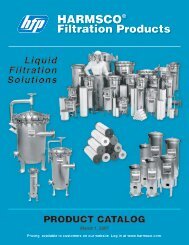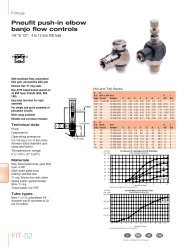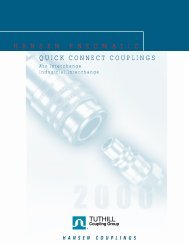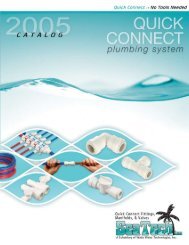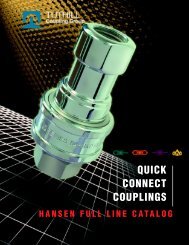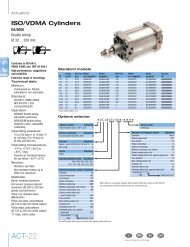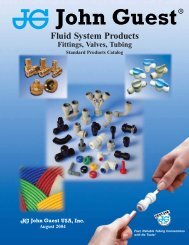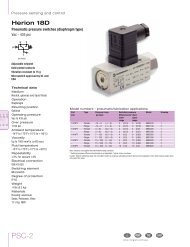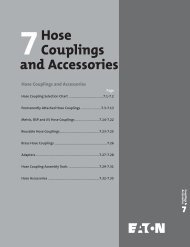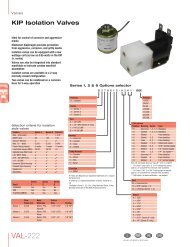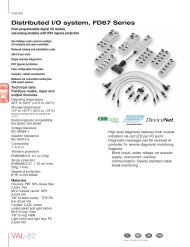FilmTec Technical Manual - Chester Paul Company
FilmTec Technical Manual - Chester Paul Company
FilmTec Technical Manual - Chester Paul Company
Create successful ePaper yourself
Turn your PDF publications into a flip-book with our unique Google optimized e-Paper software.
The conditions for CaCO 3 scale control are:LSI c < 0 when no antiscalant is addedLSI c ≤1 when 20 mg/L sodium hexametaphosphate is in the concentrate streamLSI c > 1 possible with polymeric organic scale inhibitors. For the maximum LSI c and required dosages, please referto the scale inhibitor manufacturer’s literature.If LSI c is not within the above conditions, adjustments can be made by one of the following means. A new LSI c can then becalculated:• The recovery, Y, can be lowered and LSI c can be calculated as above by substituting a new value for the recovery.• Decreasing the calcium concentration in the feed solution by means of sodium cycle ion exchange. This will increase thepCa and will therefore decrease the LSI c . Softening will not change the alkalinity or pH of the feed solution and the slightchange in TDS f may be considered negligible. After softening, the LSI c can be calculated as above using the lower valuefor calcium concentration.• Adding acid (HCl, CO 2 , H 2 SO 4 , etc.) to the feed solution changes the Alk f , C f , and pH. The slight change in TDS f canusually be neglected. Acid addition will decrease the LSI c ; however, since many variables change with acidification, trialand error computations are required to determine the amount of acid needed to obtain the desired LSI c . The number oftrial and error computations required to determine the amount of acid needed can be reduced greatly by using the pH scalculated in Eq. 9. Since pH c will usually be 0.5 units higher than the pH f , the first computation can be made with anacidified feed solution that is 0.5 units lower than the pH s .For an assumed pH (pH acid ), obtained from addition of acid to the feed solution, obtain the ratio of Alk acid /C acid fromFigure 2.3. From this ratio, Alk f , and C f , calculate the mg/L of acid used (x). For example, for H 2 SO 4 addition (100%):Alk Alkf−1.02xacid= Eq. 11C C + 0.90xacidfCalculate the total alkalinity of the acidified feed water (Alk acid ) and the CO 2 content in the acidified feed water (C acid ) asfollows:Alk acid= Alkf−1.02xEq. 12C acid= Cf+ 0. 90xEq. 13Using Alk acid and C acid for the new pH, calculate the LSI c .If HCl (100%) is used for acidification, Eq. 11 is:Alk Alkf−1.37yacid= Eq. 14C C + 1.21yacidwhere:y = HCl (100%), mg/LfReverse Osmosis and Nanofiltration in OperationOnce a reverse osmosis or nanofiltration system is operating, the Langelier Saturation Index can be directly calculated fromthe analysis of Alk c , Ca c , TDS c , and pH c of the concentrate stream and compared with the projected LSI c .Use of ComputersThe LSI c and the acid dosage required to adjust a certain LSI c can be determined using a personal computer and theFILMTEC Reverse Osmosis System Analysis (ROSA) computer program. The ROSA computer program can bedownloaded here, www.dow.com/liquidseps/design/rosa.htm.Page 31 of 180 ® Trademark of The Dow Chemical <strong>Company</strong> ("Dow") or an affiliated company of Dow Form No. 609-00071



